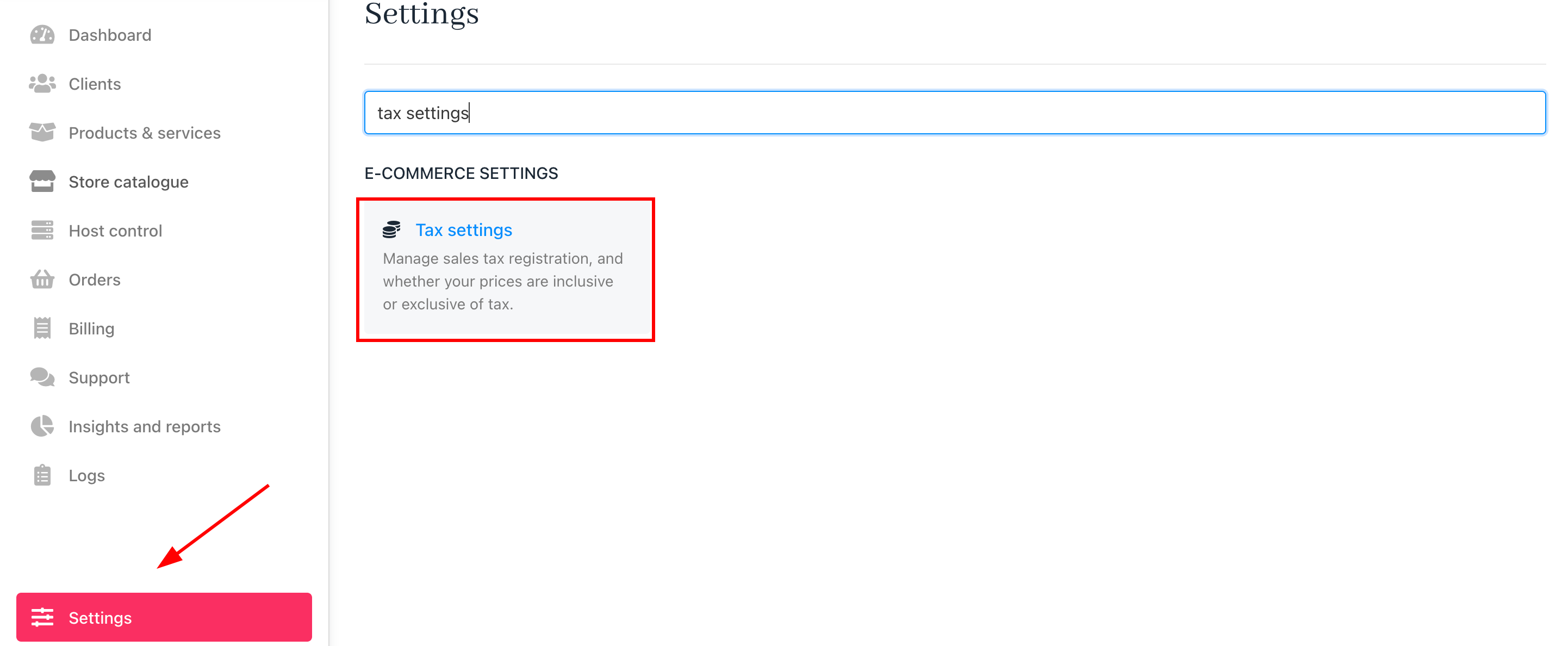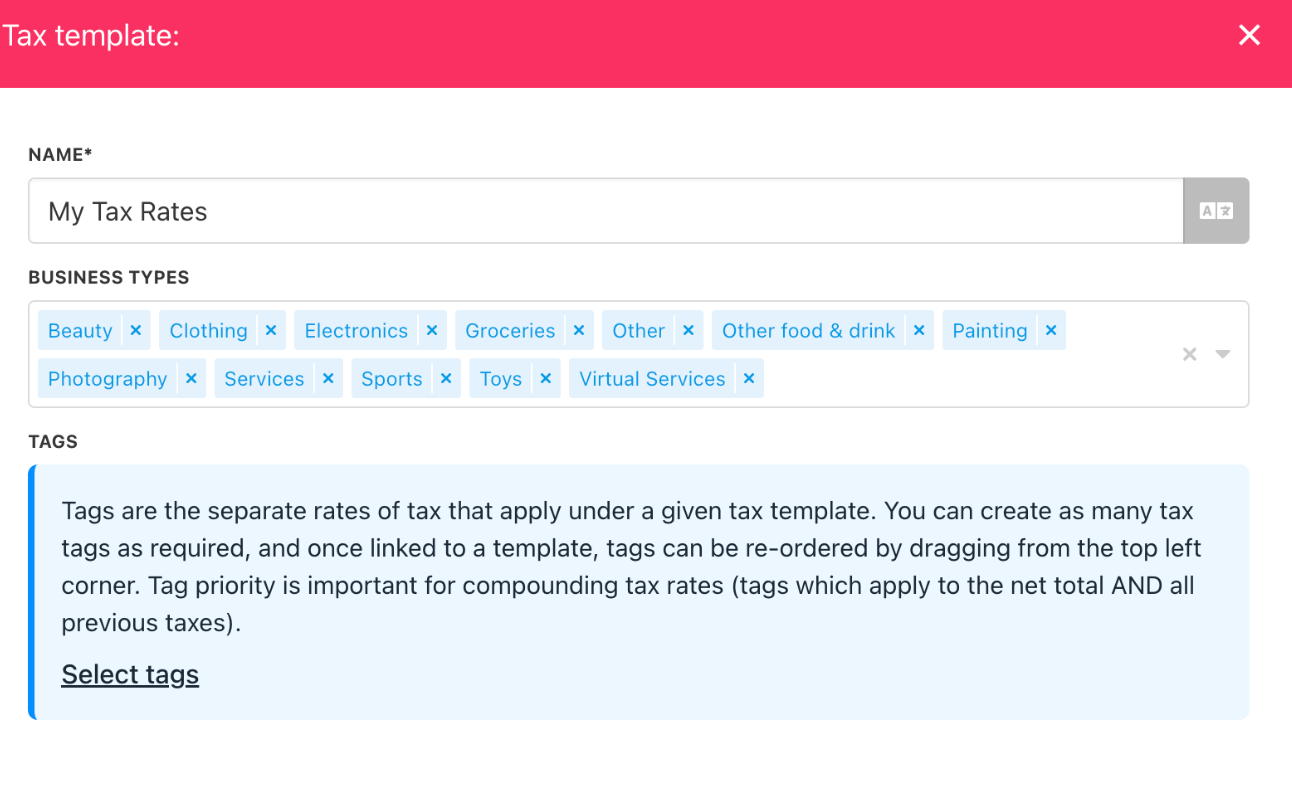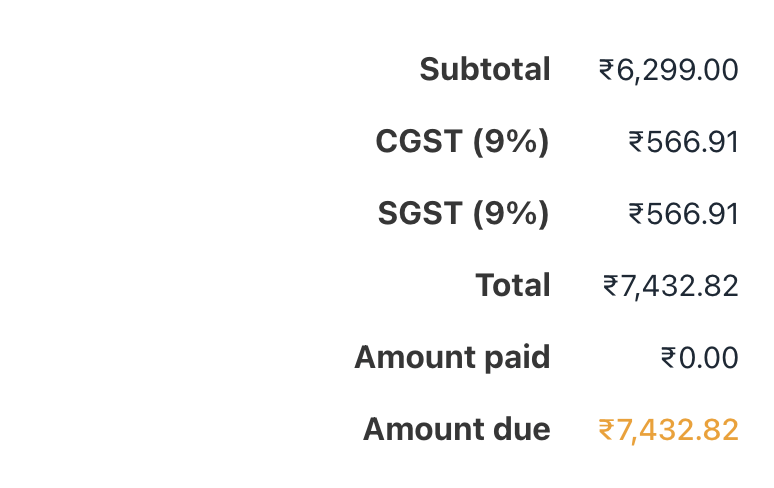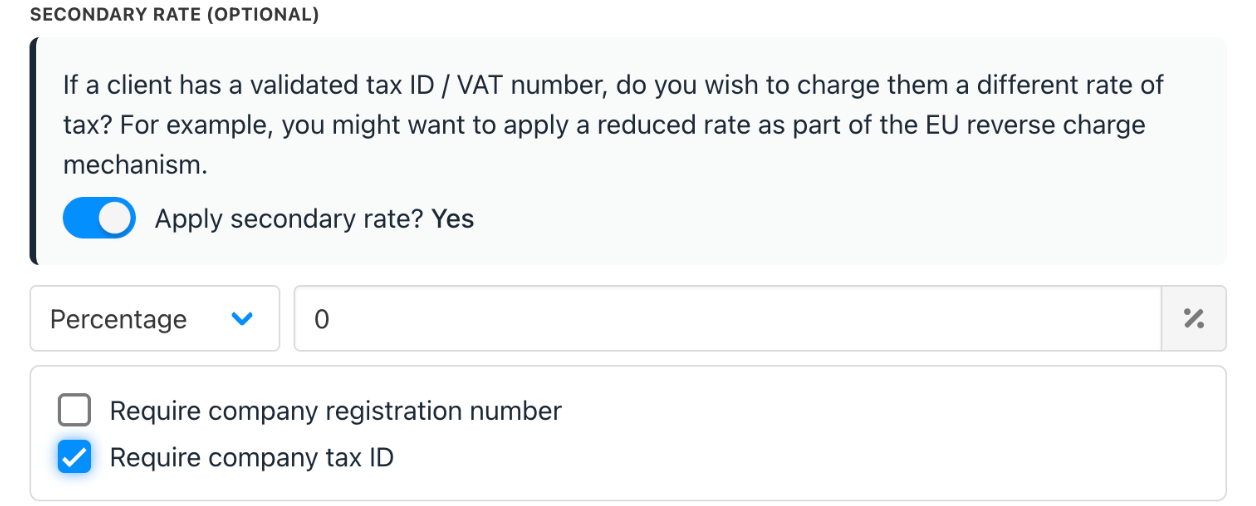How to Set Sales Taxes (e.g. VAT, GST)
Add and manage tax rules
Upmind supports and can configure global sales tax requirements, including:
- UK/EU VAT
- US sales taxes (state and federal)
- Indian GST
- Service charges
- Card processing fees
Taxes in Upmind are customisable and managed using templates and tags, allowing different rules per product and client location.
This guide explains how to set up and configure taxes for your brand, as well as how to debug any issues with the setup.
Accessing tax settings
- Log in to Upmind.
- Go to
Settings. - Select Tax Settings from the Ecommerce Settings.

Settings > Tax settings
Enabling tax features
Switch the TAX Registered? ON if your business is tax registered, and then enter your tax number for official documentation. This enables tax options throughout your store.
By default, the toggle is OFF, so you can switch it ON if applicable.

Toggle tax settings
Tax inclusion setting
You can decide if your product prices are tax inclusive (tax included) or tax exclusive (tax added). By default, the setting is off, so Upmind adds tax (if applicable) to the price.
Toggle it ON to indicate prices include tax, and Upmind will deduct tax accordingly.

Toggle tax inclusion
How Upmind handles taxes
Upmind uses tax templates and tax tags to manage taxes efficiently.
Tax templates
Tax templates are sets of tax rules assigned to products. Each product can have only one tax template, but a template can apply to many products. Templates allow you to apply different tax rules based on product type, location, or client type.
Example: A web design firm might charge local tax on design work, but tax hosting based on the client’s location. Food and beverage businesses may charge higher tax rates on alcohol than on food.
System defaultsYou can optionally import our system default tax templates, which cover the most common tax options.
You can create tax templates by clicking Add Tax Template, naming it (visible only to you), and selecting the applicable business types (commonly Virtual Services). Then, assign tax tags to the template.

Tax template
Tax tags
Tax tags are individual tax rules within a template. They can be fixed fees or percentages and may include secondary rates. When applied, Upmind processes tax tags in order, applying those relevant to the invoice.
Example: Two tax tags applied:

Tax tag
When creating a tax tag, you:
- Name the tag.
- Choose the default fixed or percentage fee and enter the amount and currency.

Tax tag name and fee
- Optionally add a secondary rate for specific business types, such as businesses rather than individuals. This is common in the EU under the reverse charge mechanism for applicable countries.

Secondary rate
- Set display options (show tax at invoice or item level).

Display options
- Choose whether tax applies to the subtotal only or the subtotal plus previous taxes.

Apply to
- Assign applicable locations (countries, regions, client types).

Locations
Tax on invoices
When an invoice is generated, Upmind shows a tax summary and a breakdown of taxes charged.
Applying taxes by location
Upmind determines applicable taxes based on the client’s address or, if none is provided, their IP geolocation at the country level. If a client adds an address, the tax rate is recalculated for greater accuracy.
Since IP geolocation only identifies the country, regional tax rules require a client’s address to apply correctly; otherwise, no tax rate will display for specific regions.
Example: Indian GST System
India has three sales tax types:
- IGST: Charged on inter-state transactions.
- CGST: Charged on intra-state transactions by the central government.
- SGST: Charged on intra-state transactions by the state government.
So, a business in Maharashtra charges SGST for local clients and both IGST and CGST for clients in other states.

Tax Exemption Codes are added under the tax tag
Consult your accountant for tax advice. Upmind provides software support but does not replace professional guidance. You can import system default tax templates covering common tax scenarios.
Updated 5 months ago